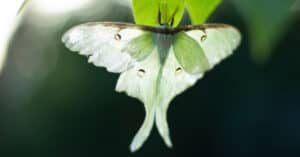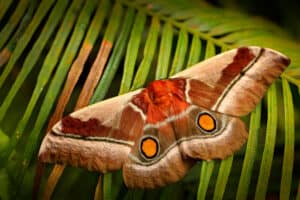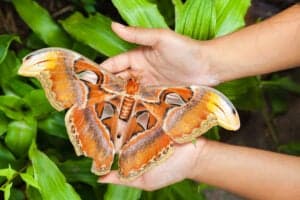Like most areas, you’ll find many common moths in Florida. There are tons of moths that live in Florida due to it’s unique ecosystem. Due to the warmer weather, it is not surprising that moths tend to live longer and grow bigger.
Northern Florida is also very different from southern Florida. Therefore, a moth you may find in the panhandle isn’t necessarily one you’ll find in the Florida Keys. You’ll need to consider exactly where you are located before identifying any moth you see. Not all have a range that extends throughout all of Florida.
That said, here are some of the more common species found throughout the state. We’ll also discuss a butterfly that is commonly misidentified as a moth when in caterpillar form.
1. White-Lined Sphinx Moth
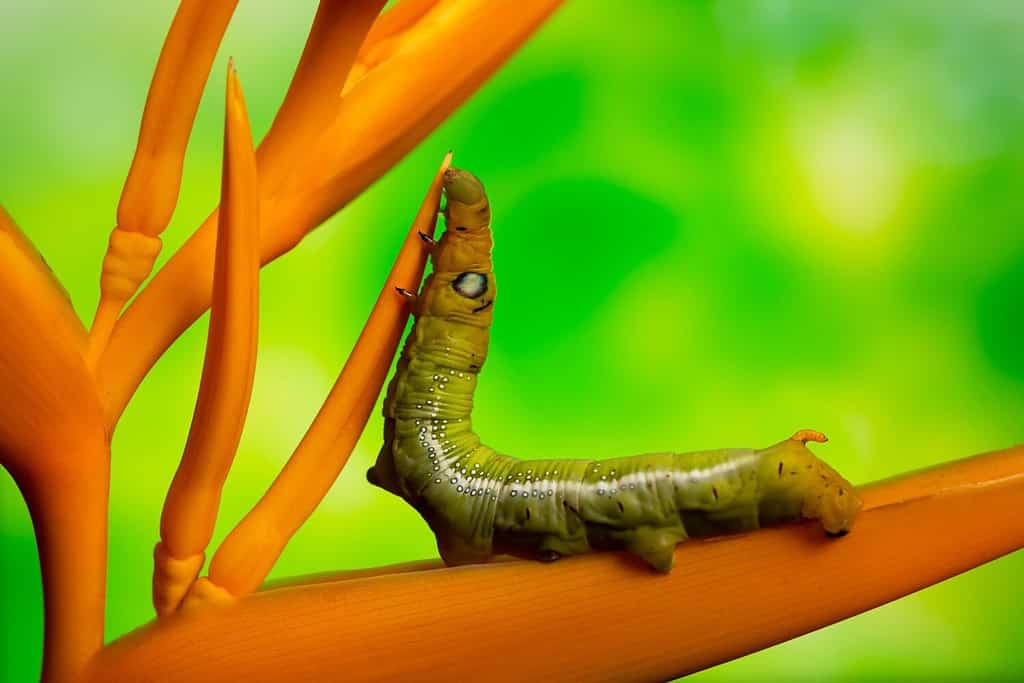
The caterpillars of this species are pretty unremarkable. They look very similar to other green caterpillars in the state.
©Wallenrock/Shutterstock.com
This species is also referred to as the “hummingbird moth” due to its ability to hover while in flight. It’s a fascinating creature with elegant white stripes. However, it’s pretty small, with a wingspan of only 2 inches (though they can get a bit larger in warmer parts of Florida).
Like a hummingbird, this moth will hover at flowers to drink nectar. In many cases, they are mistaken for a hummingbird while flying.
2. Io Moth
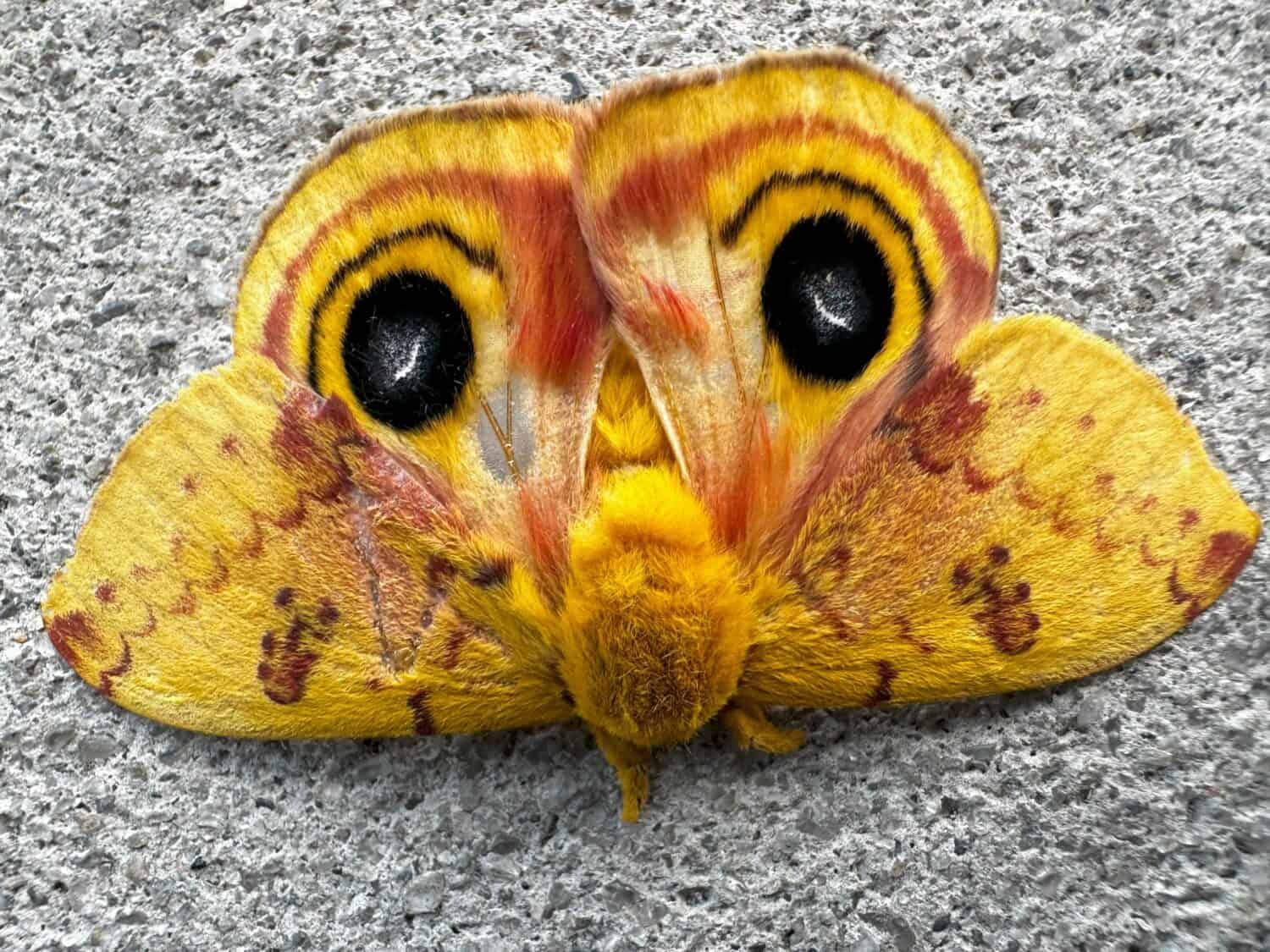
These moths have very large eye spots that confuse predators. The idea is that predators will confuse the moths for something larger and avoid preying on them.
©Linardo_respado/Shutterstock.com
This large moth has a wingspan often exceeding 3 inches, especially in Florida. They have a very intricate pattern and eye spots on their wings. It’s believed that these eye spots startle predators and prevent the moth from being eaten.
The caterpillars have a vibrant green color and rows of spiky, colorful tubercles. They’re pretty easy to identify and spot. Usually, you’ll find them in the woodlands or gardens, but they aren’t attached to any one plant.
3. Luna Moth
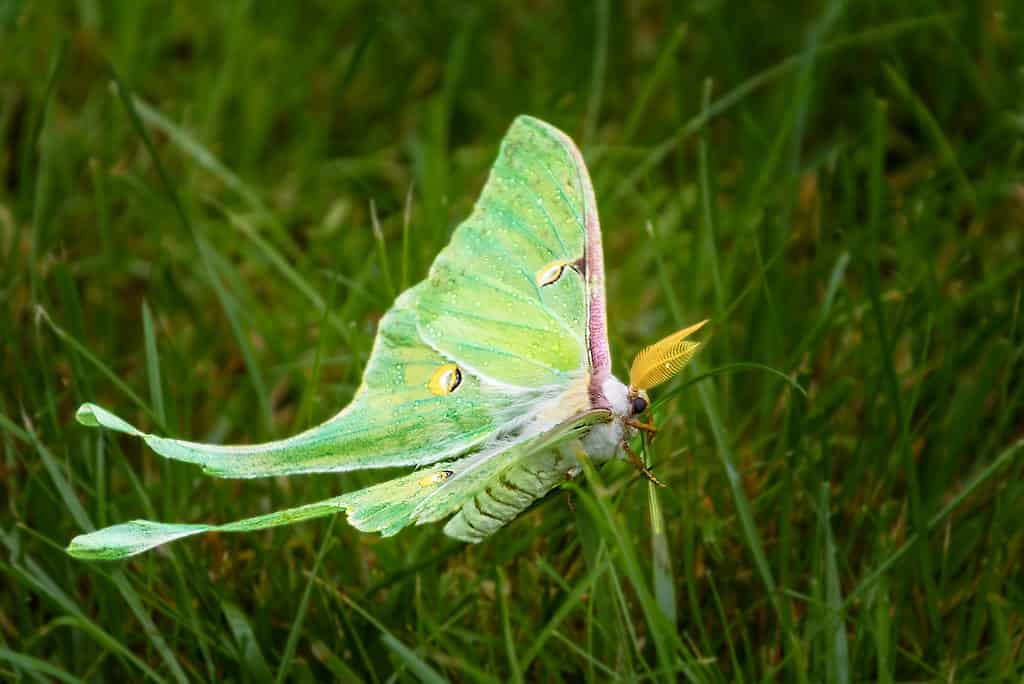
Luna moths are one of the largest and most beautiful moths in the state. Their long hindwings and fuzzy, yellow “ears” make them very easy to identify.
©K Quinn Ferris/Shutterstock.com
These moths are known for their pale green wings and very long hindwings. They’re beautiful moths and are often considered one of the more “popular” species. They can reach up to 4.5 inches in Florida, which makes them even more mesmerizing.
They’re attracted to lights at night, so you may find them flying around your porch. They live very short lifespans as adults, so seeing one is a bit rarer than with other species.
4. Polyphemus Moth
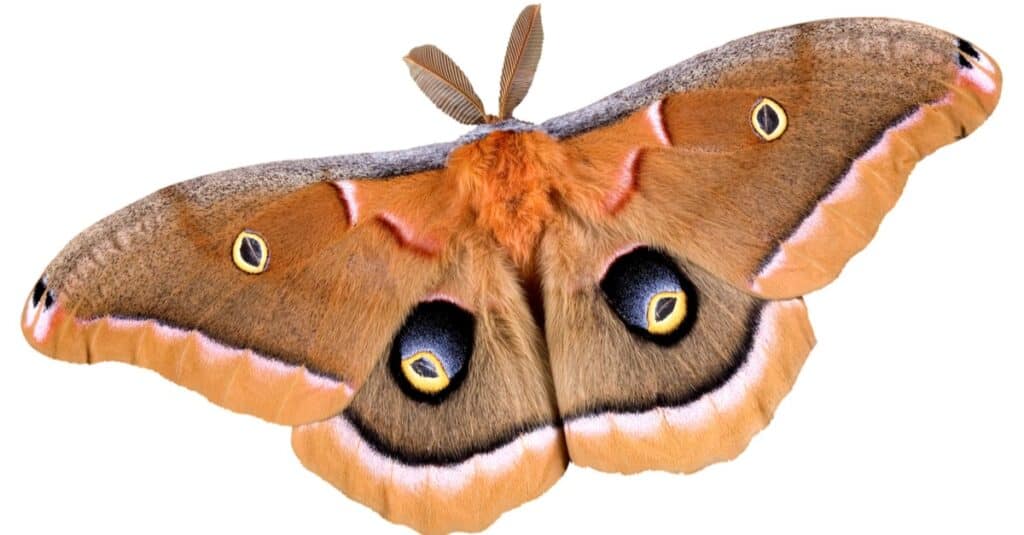
Like many species, this moth has eye dots that confuse predators and help protect them from getting eaten. They also have very large “bat” ears, which make them pretty cute.
©Cathy Keifer/Shutterstock.com
Similar in size and beauty to the Luna Moth, the Polyphemus Moth is known for its large, rust-colored eye spots on its wings. With a wingspan ranging from 4 to 6 inches, it’s one of North America’s largest moths.
This species is often found in wooded areas and is known to be attracted to artificial lights at night. Their caterpillars aren’t attached to any one plant species like some others, so you’ll find them in a wide variety of places.
5. Cecropia Moth

This species is one of the largest in Florida, with a wingspan of up to 7 inches. While they are brightly colored, they can be a bit intimidating due to their huge size.
©Cathy Keifer/Shutterstock.com
The Cecropia moth is another very large species. They have a wingspan of up to 7 inches, making them absolutely massive compared to most other species. Therefore, seeing one isn’t all that uncommon. If one flutters nearby, you will probably see it.
Their wings are reddish-brown and have intricate patterns with white bands. They’re usually found in deciduous woodlands, where their large size makes them very captivating.
6. Eastern Tiger Swallowtail
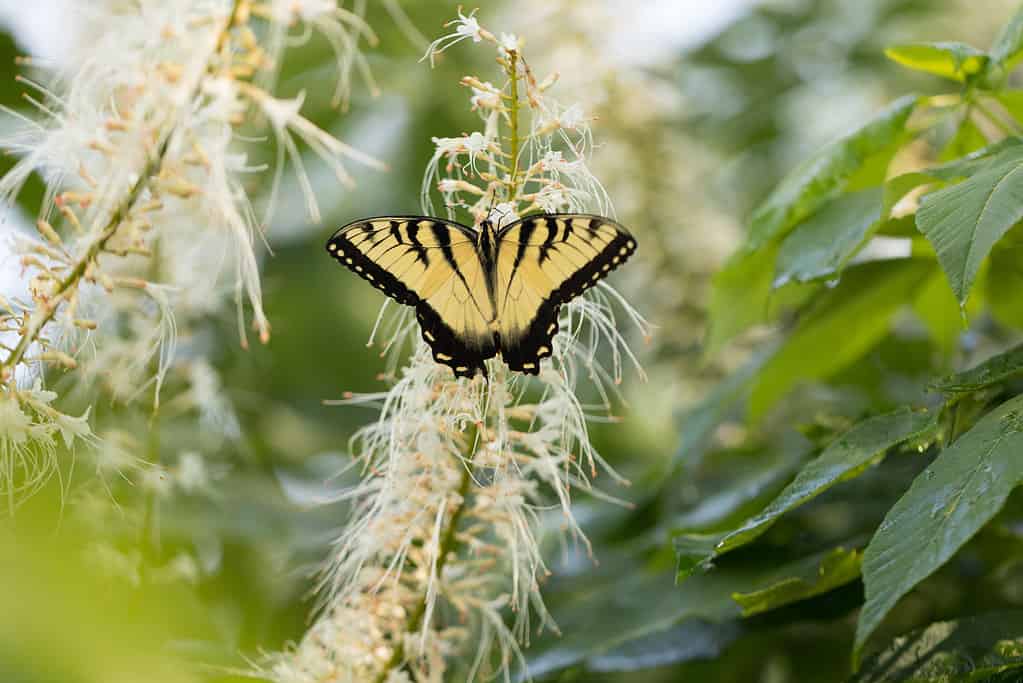
While this species isn’t a moth, it’s caterpillars are often mistaken as a moth. Therefore, we decided to add it to this list to help prevent misidentification.
©iStock.com/Roberto Galan
This species is technically a butterfly, not a moth. However, the caterpillar acts like a moth caterpillar. Therefore, when in its larva stage, it is often confused with other moth species. Sometimes, you may not even realize it isn’t a butterfly until it transforms into one.
After becoming a butterfly, this species has very large, yellow wings with black stripes. It resembles the pattern of a tiger, hence its name.
This species is very common throughout North America, so you will find it in many other states, as well.
7. Hummingbird Clearwing Moth
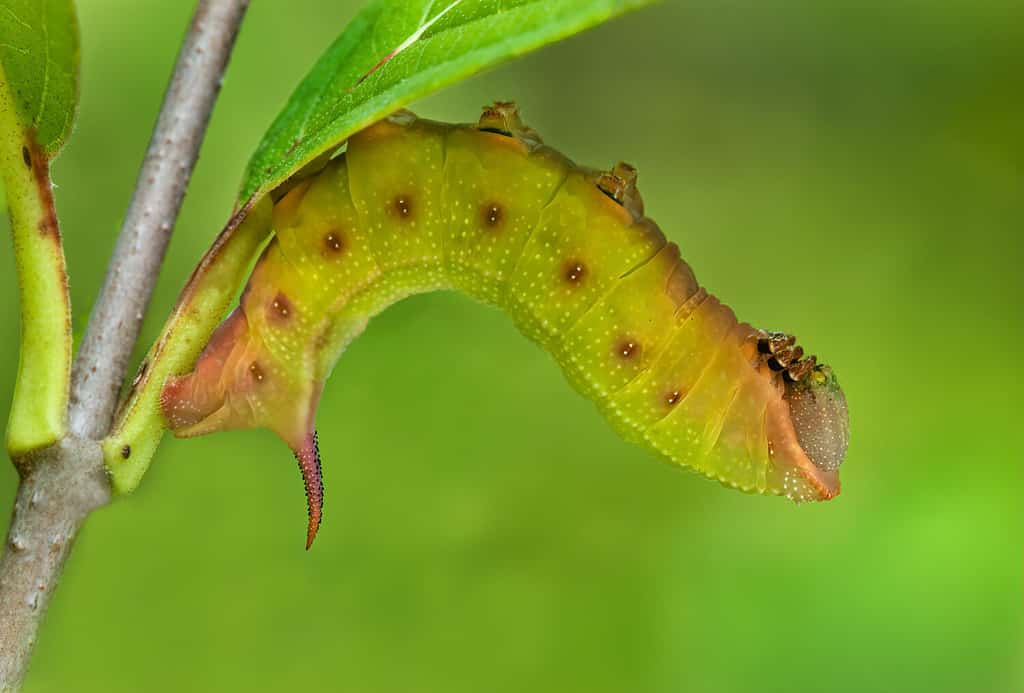
These caterpillars are exceptionally large and eat
a lot. They are known for decimating crops, as they can destroy a plant very quickly.
©Gerry Bishop/Shutterstock.com
This moth also mimics a hummingbird – in both appearance and behavior. It has clear wings and fur-like scales all over its body. You may see it hovering near flowers as it sips nectar with its very long proboscis.
While this moth’s ability to mimic a hummingbird is rare, other species do it. Therefore, simply seeing a moth drinking from a flower like a hummingbird isn’t enough to make an identification.
8. Sphinx Moths
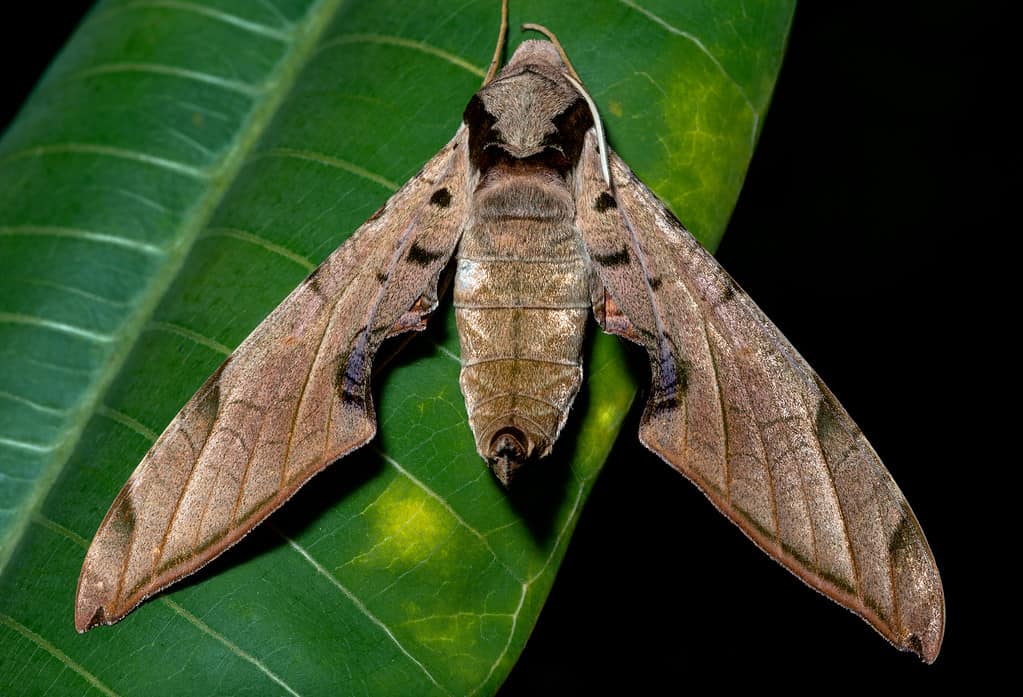
You’ll find many species of sphinx moth in Florida, where they can grow quite large due to the warmer weather. They often fly around similarly to a hummingbird.
©iStock.com/Daynjer-In-Focus
Sphinx moths are another species that acts like a hummingbird. However, they are very large, so they are often called “hawk moths” as well. They have very streamlined bodies, allowing them to navigate the air efficiently.
This family has several species within Florida, each with its own distinct patterns and preferences. They are known for destroying crops, as their larvae can eat through a whole plant very quickly.
9. Tiger Moths
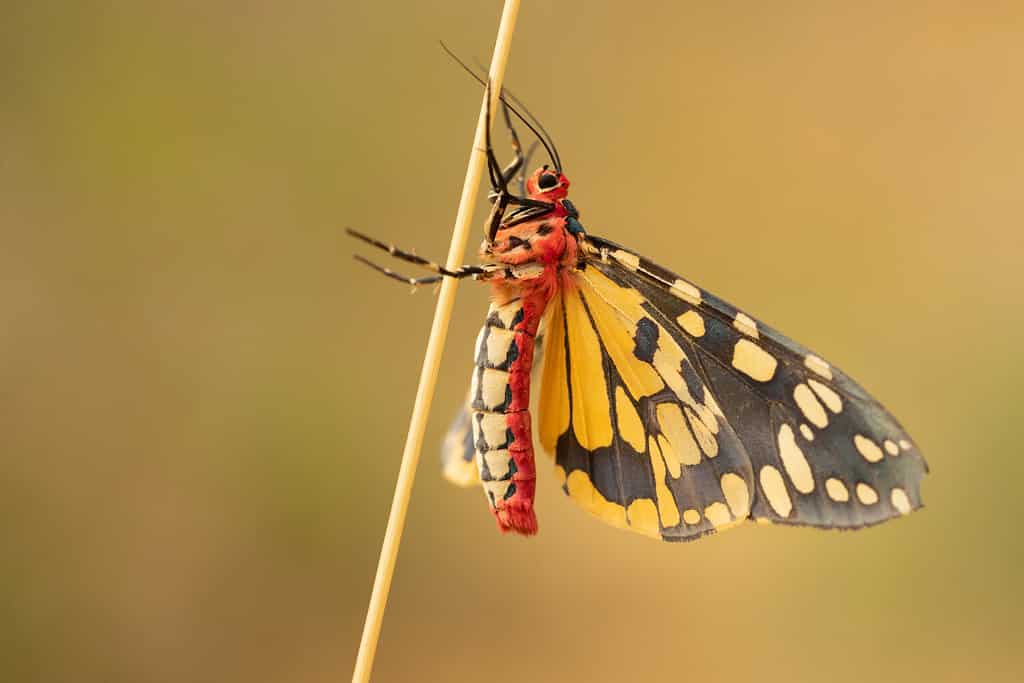
While there are many species of tiger moth, they are all brightly colored to tell predators that they taste bad, though they are technically not poisonous.
©Milan Zygmunt/Shutterstock.com
There are many types of Tiger moths in Florida. Often, these moths are pretty colorful and very fuzzy. They are unpalatable and have a very bold coloration to make this clear. They’re pretty easy to spot and identify, thanks to their bright colors.
The Virgin Tiger Moth and the Polka-dot Wasp Moth exemplify this intriguing moth group. You can find several others throughout the state, as well.
10. Underwing Moths
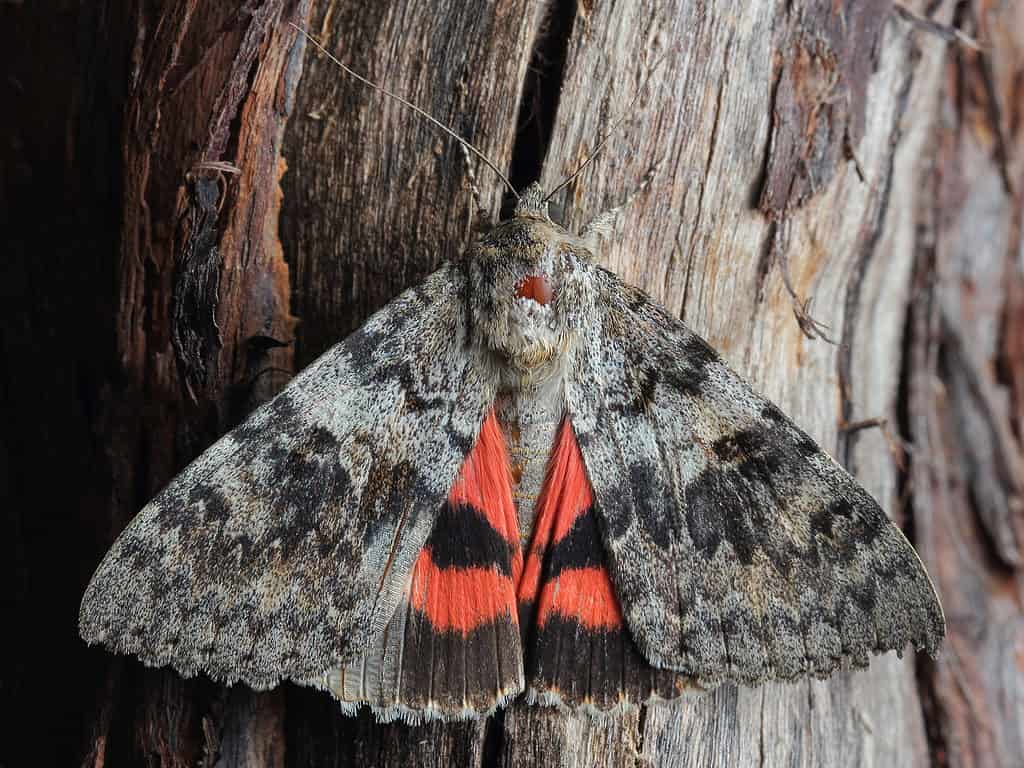
These moths can be hard to identify from a distance. You have to get close to see their brightly colored hindwings, which give their species away.
©Vitalii Hulai/Shutterstock.com
Underwing moths are known for their cryptic upper wings and very brightly colored hindwings. Often, they provide a surprise flash of color when disturbed, making them one of the more beautiful moths to watch out for.
Usually, you’ll find them resting on tree trunks. They’re best known for their intricate patterns on their wings. Of course, each particular species is a little bit different from the last.
11. Geometrid Moths
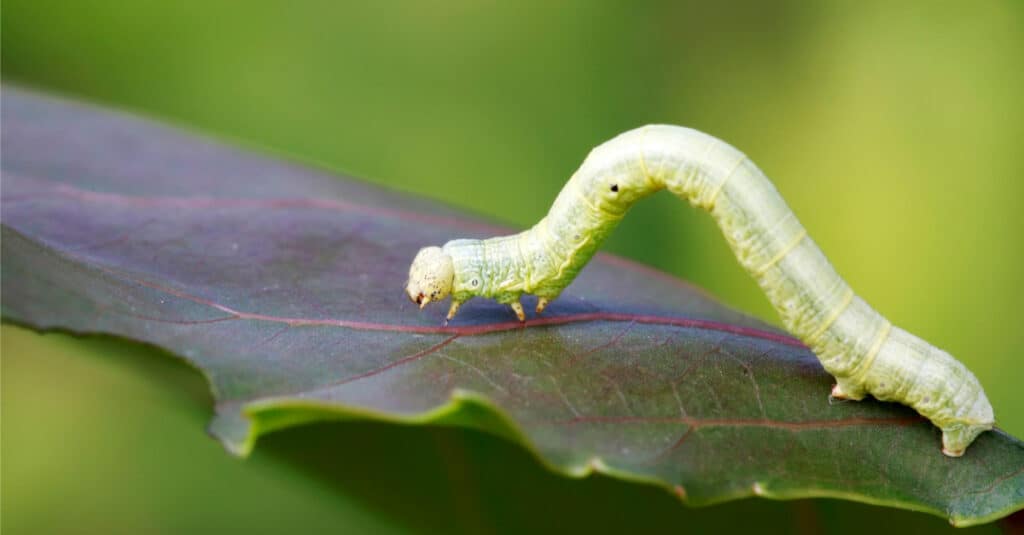
You probably know this species as an
inchworm. However, this “worm” is actually the caterpillar of a moth.
©iStock.com/lnzyx
Geometrid moths, also known as inchworm moths, come in various shapes and colors. They are named for their caterpillars’ distinctive looping or inching movement. Their caterpillars are pretty easy to identify for this reason.
These moths often rest on foliage and tree bark, blending in with their surroundings and displaying remarkable camouflage. They rely mostly on camouflage, unlike some other species.
Summary of Common Moths You’ll Find in Florida
| Number | Species |
|---|---|
| 1 | White-lined Sphinx Moth |
| 2 | Io Moth |
| 3 | Luna Moth |
| 4 | Polyphemus Moth |
| 5 | Cecripia Moth |
| 6 | Eastern Tiger Swallowtail |
| 7 | Hummingbird Clearwing Moth |
| 8 | Sphinx Moths |
| 9 | Tiger Moths |
| 10 | Underwing Moths |
| 11 | Geometrid Moths |
The photo featured at the top of this post is © Felicia Dawn Hamberg/Shutterstock.com
Thank you for reading! Have some feedback for us? Contact the AZ Animals editorial team.



